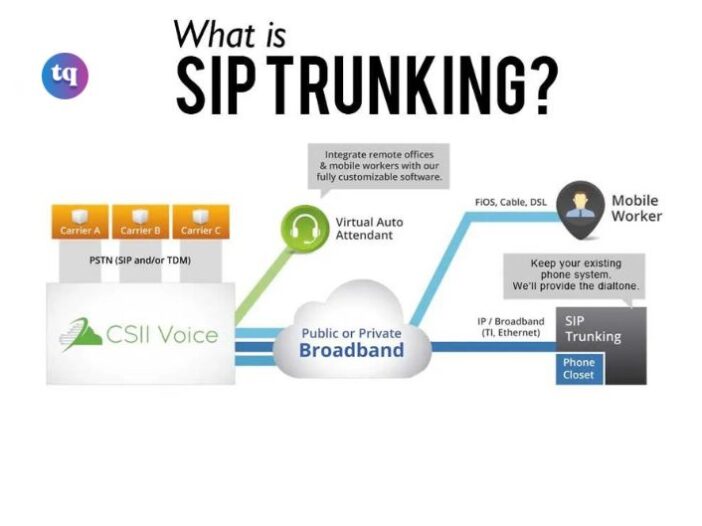
SIP trunking is a communication technology that enables businesses to make and receive calls over the internet using VoIP (Voice over Internet Protocol). SIP trunking has become increasingly popular among businesses of all sizes because it offers a cost-effective, flexible, and scalable solution for their communication needs. This blog will explore what SIP trunking is, what a SIP Trunk Provider is, and how it works with VoIP.
Table of Contents
How Does SIP Trunking Work with VoIP?
SIP trunking connects a business’s IP-PBX phone system to the internet through a SIP trunk provider. The provider acts as a bridge between the business’s phone system and the internet, allowing the business to make and receive calls over the Internet.
Here’s how SIP trunking works with VoIP:
Business connects IP-PBX to the internet: The first step in setting up SIP trunking is to connect the business’s IP-PBX phone system to the internet. This is typically done using a router or gateway device connected to the business’s LAN (Local Area Network).
The business chooses a trunk provider:
The next step is to choose a SIP provider. The business must select a provider with the features and pricing that best fits their needs.
The trunk provider sets up the connection:
Once the business has selected a provider, the provider will set up the connection between the business’s phone system and the internet. This typically involves configuring the router or gateway device to work with the provider’s network.
The business makes and receives calls:
Once the connection is set up, the business can start making and receiving calls over the internet using VoIP. The SIP Trunking Service Provider will handle the call routing, so the business does not have to worry about managing multiple phone lines or numbers.
Benefits of SIP Trunking with VoIP
SIP trunking with VoIP offers many benefits over traditional phone lines. Here are a few of the key benefits:
Scalability:
SIP trunking with VoIP is highly scalable, which means that businesses can easily add or remove phone lines as their needs change. This makes it easy for businesses to adapt to changes in their communication needs.
Flexibility:
SIP trunking with VoIP enables businesses to use their existing phone systems, so they do not have to purchase new hardware or software. This makes it easy for businesses to adopt new communication technologies without making significant investments.
Quality of service:
SIP trunking with VoIP offers high-quality voice and video calls over the Internet. The technology offers advanced features like call forwarding, call routing, and voicemail to email, which can improve the communication experience for businesses and their customers.
Business continuity:
SIP trunking with VoIP offers better business continuity than traditional phone lines. Suppose a business experiences a power outage or network disruption. In that case, SIP trunking can automatically route calls to a backup location or mobile device, ensuring the business does not miss important calls.
Global reach:
SIP trunking with VoIP offers businesses a global reach. With SIP trunking, businesses can easily set up virtual phone numbers in multiple countries, allowing them to establish a local presence and communicate with customers worldwide.
Bottom Line
SIP trunking with VoIP is a powerful communication technology that enables businesses to make and receive calls over the internet. It offers many benefits over traditional phone lines, including cost savings, scalability, flexibility, and high-quality voice and video calls. SIP trunking with VoIP is also more reliable and offers better business continuity than traditional phone lines. If you are looking for a cost-effective, flexible, and scalable solution for your communication needs, SIP trunking with VoIP is definitely worth considering.